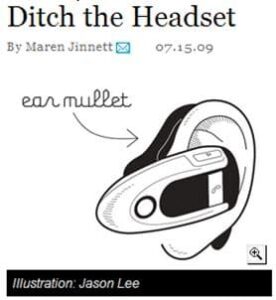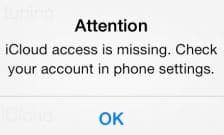Yes, Her is and yes you can! And Her name is Hearable.1
What Is Her?
Just in time, science meets fiction as life starts imitating art. Ray Bradbury didn’t name Her but he anticipated Hearables more than 60 years ago as binaural in-the-ear (ITE) devices:
“a hidden wasp snug in its special pink warm nest for an electronic ocean of sound, of music and talk and music and talk, coming in on the shore of [your] unsleeping mind.” (Fahrenheit 451)
Douglas Adams didn’t name Her either, but his Hitchhiker’s Guide to the Galaxy anticipated Hearables 35 years ago as ITE/EEG/Big Data polyglot content machines:
[the] Babel Fish … device …. a slippery little creature … inserted into your ear allowing you to immediately understand all the languages of the galaxy.
Spike Jonze made Her seem real in his critically acclaimed film of the same name last year. In the film, Hearables were communication portals to sexy, personalized, all-in-one operating systems for existential living and romance. Joaquin Phoenix couldn’t get through the day without Samantha, his Hearable Her.
Her by any name remained a fiction until technology caught up this year. Market forecasting reports (e.g., Gartner Analysts ,2013; Nick Hunn, 2014) now predict wearable technologies emerging and converging in and on the ears in short order. Such predictions are manifest in ear-level “Hearable” devices being announced , crowd sourced, and actually brought to market in recent weeks.
What’s a Hearable?
Hearables are a disruptive innovation in the best Supply Side manner. They have the potential to bring augmented reality, content, and multitasking to wearers by naturally integrating new technology into existing forms of ear-level devices. Categorical assignments of form will give way to function as emerging technology uses ear-level real estate for different applications by different industries and providers.
This is going to confuse the heck out of Audiologists and the FDA. We’re already experiencing the confusion of personal listening devices (PSAPs) that look and perform a lot like hearing aids (e.g., The Bean from Etymotic). Now, we can expect devices that look like ear pods to act like hearing aids; devices that look like hearing aids to act like ear pods; ear-level devices of all forms to assume an assortment of functions previously provided by phones, headsets, radios, personal assistants, personal trainers, personal hygienists, stock brokers, medical devices/technicians, alarms, warnings, your mom, your wife, your kids, your dog, and so forth.
In true Her fashion, Hearables promise heightened awareness, more and better real-time information, on-demand content, and personalized operating systems for your listening pleasure, education, health and safety. Spike Jonze’s movie got it right: down with Siri, up with Scarlett Johansson whispering in your ear.2
Her for the Holidays
A few Hearables hit the market in Q4 of 2014, making the vision real, if not perfect or binaural.
- Resound LiNX and Starkey Halo: Bluetooth enabled (BLE),made for iPhone (MFI) hearing aids were introduced in Q1 of 2014. Equipped with proprietary DSP platforms with wireless radios and microprocessors, these MFI hearing aids use iOS apps for a remote volume control, equalizing, environment switching and geofencing. This week, Mashable listed ReSound LiNX as #1 in its list of “14 innovations that improved the world in 2014.”
-

Fig1. Cool geeks might see Soundhawk this way. But, it’s wireless, it enhances hearing, and it’s only version 1.0.
Soundhawk Smart Listening System: Announced and reported at HHTM in July, released in November, priced around $300, the brain child of serial audio-entrepreneur Rodney Perkins, MD. It’s a monaural, app-controlled, mini-Jabra looking Bluetooth device with directional mic and “sound personalization technology” that comes with a remote mic. Soundhawk’s target market could be anybody and everybody: it aims to address the “situational needs” of listeners, most with normal hearing. Who doesn’t have situational needs?
Initial consumer reviews give Soundhawk high marks, except for its geeky, cyborg look, which could turn out to be Soundhawk’s critical flaw for some. Bluetooth headsets have not been cool since 2009 when Wired Magazine’s article, Ditch the Headset (Fig 1). wrote that anyone wearing one looks like “Count Clueless of Dorkylvania.” Ouch.
-

Fig 2. Moto Hint. Wireless, but not a hearing aid. Does other Hearable stuff. Comes in eco-friendly bamboo.
Moto Hint: A “discreet, wireless earbud” with noise cancellation, released by Motorola in October, priced at $150. It lets you dialog with Siri and other digital assistants, take phone calls, and listen to your ipod. It’s available in several finishes, accompanied by a cute little charging/carrying case (Fig 2).
Like Soundhawk, Moto Hint has received good reviews. Unlike Soundhawk, it’s not designed to improve or enhance hearing. Ouch ouch. But it IS cute.
-
Petralex Pro: This product comes to us via the Internet from a company in the British Virgin Islands. It’s not a device; hence no figure here to illustrate it. Instead, it is a hearing test and hear aid app that works with your own ear pods or headset, allowing binaural listening. Their website advises: “Use you (sic) smartphone with headset and a Petralex app instead of regular hearing aid*.”
Petralex Pro comes with a 24-page User Guide which is not for the faint of heart or most over age 30 (c.f. p 17 of the manual, shown in Fig 3). Parts of the guide (e.g., the section on compression settings) read like a crash course in “Audiology 202: Hearing Aids.” Reviews are mixed. Who’s going to wear a headset or earpods all day long? Ouch ouch ouch.
Back to Life Imitating Art
Like Oscar Wilde’s premature departure, reports of the Death of Audiology and the death of the hearing aid are exaggerated, perhaps greatly. Hearing aids–regardless of how they are named, regulated, and sold–are going to redefine and relocate themselves within the much larger Hearables market of the future. Audiologists and manufacturers will follow suit.
In the meantime, only two things are certain:
- There will be more posts detailing Hearables in 2015.
- We’re All Doomed if Steven King starts writing about Hearables and Her. But it would make a great movie. Jack Nicholson must wear hearing aids by now.
This is the first post in the Hearable series. Click here for post 2.
References
1Nick Hunn aptly coined the term Hearable in his September 2014 market forecast report. He founder and CTO of WiFore Consulting and currently chairs the Bluetooth Hearing Aid Working Group.
2Or Idris Elba if you eavesdrop in my Hearables.
Images courtesy of reddit, marcus spannier, digital trends








